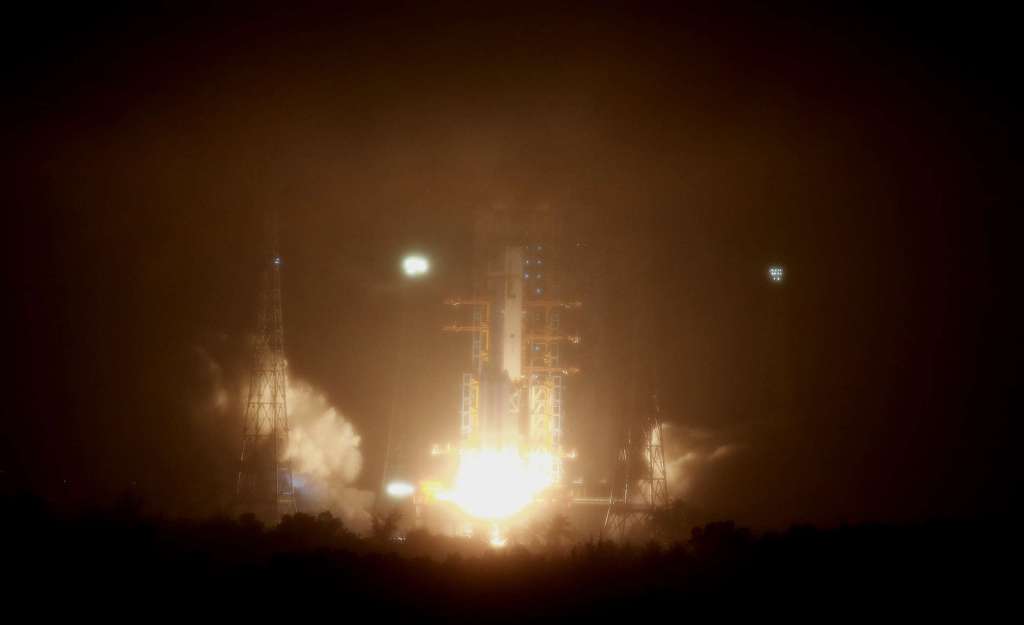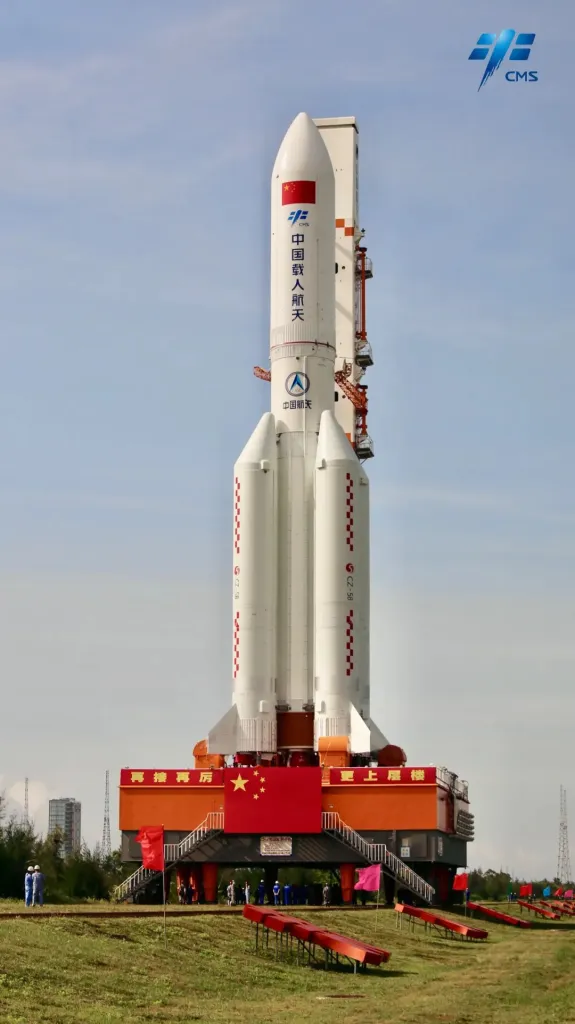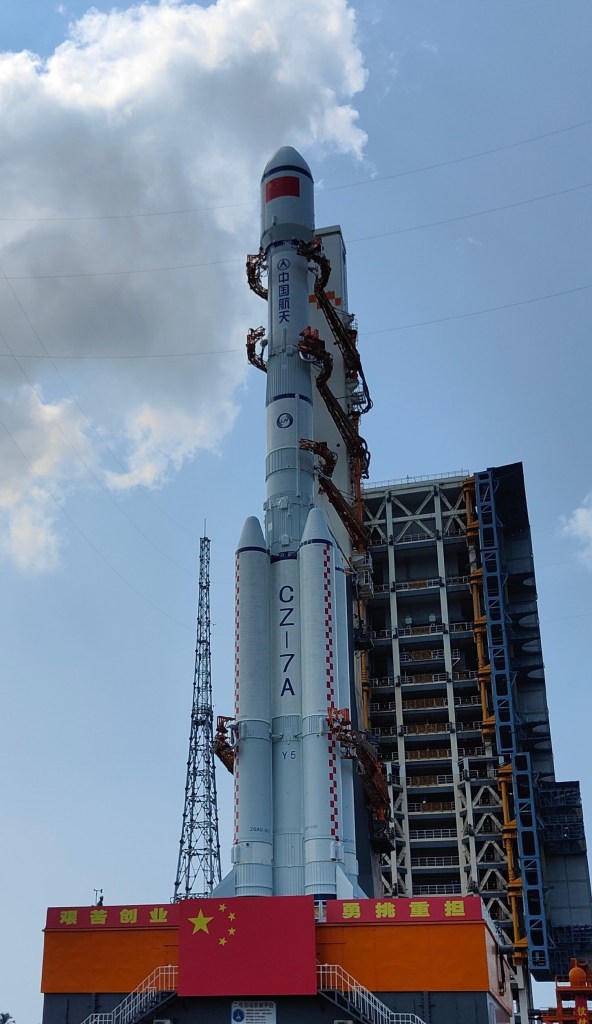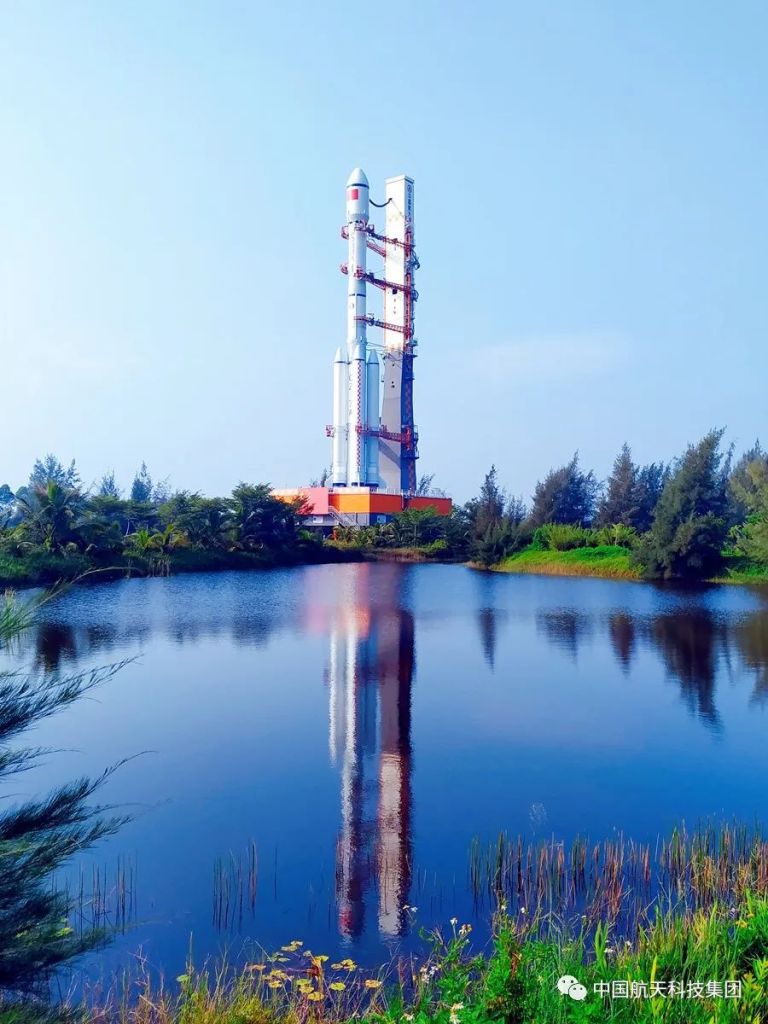Featured image credit: CASC
Lift-off Time | January 8, 2023 – 23:00 UTC January 9, 2023 – 8:00 BJT |
|---|---|
Mission Name | Shijian 23, it could be a communications satellite, or have another use |
Launch Provider | China Aerospace Science and Technology Corporation (CASC) |
Customer | Shanghai Academy of Spaceflight Technology (SAST) |
Rocket | Long March 7A Y4 |
Launch Location | LC-201, Wenchang Space Launch Site, China |
Payload mass | Close to 7,000 kg (~15,500 lb) |
Where did the spacecraft go? | Geosynchronous Equatorial Orbit (GEO); initially a Geosynchronous Transfer Orbit (GTO) of 209 km by 35793 km at 16.42 degrees inclination |
Did they attempt to recover the first stage? | No, the Long March 7A is not capable of booster recovery |
Where did the first stage land? | It crashed into the western Philippine Sea |
Did they attempt to recover the fairings? | No, the Long March 7A is not capable of fairing recovery |
Were these fairings new? | Yes |
This was the: | –2nd orbital launch attempt of 2023 –1st Chinese launch of 2023 –11th launch of a rocket of the Long March 7 family overall –1st launch of a rocket of the Long March 7 family of 2023 –5th launch of the Long March 7A overall –1st launch of the Long March 7A of 2023 |
Where to watch | Unofficial summary video of the launch with intro, beautiful music, and ambient sound |
How Did It Go?
Despite the heavy rain at Wenchang, the China Aerospace Science and Technology Corporation (CASC) — the main contractor working in the Chinese space program — successfully launched the Shijian 23 satellite (also SJ-23) atop a Long March 7A rocket, to a geostationary transfer orbit (GTO). Lift-off took place at the Wenchang Space Launch Site’s Launch Complex 201, in Hainan, China. The spacecraft will operate in a geosynchronous equatorial orbit (GEO).
What Are The Shijian Payloads?
China’s aerospace industry has a number of prolific programs aimed at improving applied technologies in this field. Shijian satellites are a series of spacecraft which certainly play a role in the mentioned search for progress. This particular fact is highlighted by the Chinese word used for their name: Shijian, or SJ — best practice, put into practice. These payloads are used to test new technologies, which are nevertheless more mature than other similar series of satellites.
One of them is the Shiyan, or SY for short, which some experts point out, should be translated as “pilot” or “trial.” However, these satellites are more commonly mentioned as “experiment,” a more widely used translation. Through this designation it is possible to infer these satellites are at an earlier stage of testing a new technology. Yet another series aiming to achieve similar goals are the Chuangxin, or CX — innovation — most probably in a similar experimental stage as the SY.
Both SJ and SY payloads have been contributing for decades now to the China High-resolution Earth Observation System (CHEOS). However, a distinction can be made between those last two, as the Shijian sats have favored more radar and infrared payloads. On the other hand, Shiyan have been more focused on Earth-observation satellites. The fact that SJ spacecraft are more developed hardware could imply a lower failure ratio, when compared to the Shiyan more experimental spacecraft, or the Chuangxin.
Shiyan 22A/B
Right after lifting off, Chinese media reported on another two experimental sats under the Shiyan designation. In the following days, mentions of these started to be erased, indicating that these two passengers were probably not on the flight. Reports from the 18th Space Defense Squadron — charged with tracking all man-made objects in orbit — showed only two objects in orbit. One of them, the upper stage of the rocket, the other the Shijian 23 satellite, and no SY spacecraft.
It appears that, in the end, only one satellite flew on this rocket, but we will stay alert for further news.
Shijian 23
Not very much had been disclosed about the Shijian 23, but it was suspected to be a communications satellite. As such, and considering the “experimental” nature of this payload, it could have been a test of the next-generation high-throughput comsat. It could be built on the DFH-4E platform, and it was believed to be very similar to the Shijian 13. In the case this was true, and after all of the tests are finished, the spacecraft could change to a ChinaSat (Zhongxing) designation to continue operating.
However, because it was revealed that SAST developed the satellite — this subsidiary does not focus on comsats — the analysts have mentioned it could have another kind of use. Officially, it was declared that Shijian 23 will carry out scientific experiments, technical verification and other fields. On another note, this is said to be the most massive spacecraft carried by the Long March 7A to a GTO. Considering this, the SJ-23 could mass close to 7,000 kg (~15,500 lb).
SJ-23’s Bus
Developed and manufactured by the Chinese CAST, the DFH-4E is suspected to be the platform used to manufacture the Shijian 23. Those initials stand for “Dongfanghong-4 Enhanced,” the first word meaning “The East is Red.” Its first implementation was in the ChinaSat 18 satellite, though this one could add dual-expansion solar arrays. Among its applications, this bus can support payloads of many different sorts, like broadband communications, mobile communications, broadcasting, and high-orbit remote sensing.
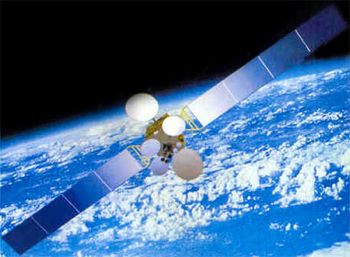
It represents an upgrade from the DFH-4 bus, as it incorporates electric propulsion and an improved efficiency in thermal management for the communications compartment. It presents a maximum launch mass of between 5,500 kg (~12,200 lb) and 6,000 kg (~13,300 lb), while its dry mass is lower than 2,700 kg (~6,000 lb). This allows for a payload massing in the range of 800 kg (~1,800 lb) to 1,000 kg (~2,200 lb), with an output power of over 10,000 W. In itself, the bus is capable of generating 13,500 W by means of two deployable solar arrays, with batteries available to store electrical power.
Other Shijian Launches
As previously mentioned, these satellites are part of a larger group of “put into practice” payloads. In the following table you can find some other Shijian spacecraft that were launched in the somewhat recent past.
| Date | Launch Vehicle | Mission Name |
| July 2, 2017 – 11:23 UTC* | Long March 5 | Shijian 18 |
| December 27, 2019 – 12:45 UTC | Long March 5 | Shijian 20 |
| October 24, 2021 – 1:27 UTC | Long March 3B/E | Shijian 21 |
| December 10, 2021 – 00:11 UTC | Long March 4B | Shijian 6 Group 5 |
(*) This flight resulted in a failure
What Is The Long March 7A?
A Brief History Of The New Long Marches
Like many other programs in the spaceflight world, the Chinese space program builds up on heritage knowledge and hardware from the defense sector. Examples of this are the veteran rockets in the family, namely the Long March 2, 3, and 4 — these still have active variants — which derive from the Dong Feng 5 intercontinental ballistic missiles (ICBM).
After decades in service, these hypergolics-propelled launch vehicles are finally, though slowly, heading for retirement. In their stead, a program was delineated to develop and manufacture a new generation of rockets purely conceived with only space applications in mind. The enterprise was assigned to the China Academy of Launch Vehicle Technology (CALT).
Aiming to develop flexible launchers, utilizing more advanced technologies, avoiding the use of highly toxic propellants, and following modularization criteria, the Long March 5 (LM-5) was envisaged, and a series of supplementary vehicles: the Long March 6, 7, and 8. Through the implementation of stages in three basic diameters — 5 m (16.4 ft), 3.35 m (11.0 ft), and 2.25 m (7.4 ft) — housing liquid-fed engines specifically developed for this plan, the newcomers were brought forth.
The Long March 7A
Among the younglings, it was the LM-6 that first came into active service, followed about nine months later by its bigger brother: the LM-7 which first flew on June 25, 2016 (four months later, the LM-5). Its derivative, the 长征七号A, or Chang Zheng 7A (CZ-7A) in its anglicized form, debuted about three and a half years later. The Long March 7A is a three-stage medium-lift expendable launch vehicle. With a capability of lofting up to 13,500 kg (29,762 lb) into low-Earth orbit (LEO), and up to 7,000 kg (15,432 lb) into GTO, the whole vehicle masses some 570,000 kg (1,256,634 lb) while measuring 60.1 m (197 ft) tall. At lift off, the rocket can produce up to 7,200 kN of thrust.
| Serial # | Date, Time UTC [yyyy-mm-dd] | Payload |
| Y1 | 2020-03-16, 13:34 | XJY 6 |
| Y2 | 2021-03-11, 17:51 | XJY-6 02 |
| Y3 | 2021-12-23, 10:16 | Shiyan 12-01 & 02 |
| Y5 | 2022-09-13, 13:18 | ChinaSat 1E |
| Y4 | 2023-01-08 23:00 | Shijian 23 |
First Stage
The first stage consists of the center core and four liquid propellant boosters, counterintuitively forming a single stage. Such a design feature was considered a good option to reduce the amount of impact points after staging over land — even when for the time being it is only launched from Hainan Island.
The core is 3.35 m (11.0 ft) in diameter and 26.3 m (86.3 ft) in length, presenting a total mass of about 186,500 kg (411,162 lb). Powered by two kerolox — meaning kerosene and liquid oxygen — oxygen-rich staged-combustion-cycle YF-100 engines, the whole core produces roughly 2,400 kN of thrust and burns with a specific impulse (Isp) of 300 s.
Each booster consists of a single YF-100 engine, installed in a module with a diameter of 2.25 m (7.4 ft) and a length of about 26.3 m (86.3 ft). It presents a total mass of 81,500 kg, while it generates a thrust of 1,200 kN, and it burns with an Isp of 300 s. As mentioned, the whole first stage ensemble’s thrust is of about 7,200 kN.
Second Stage
This one is also 3.35 m (11.0 ft) in diameter, but its length is about 8 m (26.2 ft). It totalizes a mass of 70,500 kg (155,426 lb), and it houses four kerolox oxygen-rich staged-combustion-cycle YF-115 engines. Each engine produces 176.5 kN of thrust — resulting in a combined value of 706 kN — has an ISP of 341.5 s, and a chamber pressure of 117 bar.
Third Stage
The upper stage of the Long March 7A rocket is derived from the Long March 3B, whose dimensions are 3 m (9.8 ft) in diameter and 12.4 m (40.7 ft) in length. This third stage uses two hydrolox-fed YF-75 engines, producing 78.45 kN of thrust each, and featuring an Isp of 438 s. This makes it one of the most efficient chemical rocket engines, only behind a few others, like the RS-25 with an Isp of 452 s, or the RL-10 with an Isp of 465 s.
Wenchang and Yao 4
All of the Long March 7 and the 7A rockets are launched from the Wenchang Space Launch Site. This facility is managed as a site belonging to the Xichang Satellite Launch Center, therefore the difference in the structure of the name. This is, otherwise, identical for the remaining two other centers — the Jiuquan Satellite Launch Center and the Taiyuan Satellite Launch Center. Wenchang offers two launch complexes: no. 1, for the Long March 5 and 5B vehicles, and no. 2, for the Long March 7 and 7A. Each of them is host to only one pad, hence the abbreviated designation LC-201 for the latter.
Painted on the rocket’s fuselage — more precisely on its first stage, between two boosters — the identification Y4, or Yao 4, can be seen. Through this, it is possible to know this was the fourth Long March 7A built. As shown in the previous table, the flight with a Y5 serial number came before the present one. This is not uncommon, and could simply mean operations regarding the Y4 rocket were delayed for some reason.
Because of the larger size of the Shijian 23, inside the 4.2 m (~13.8 ft) diameter fairing a larger payload adapter became necessary in this opportunity. Additionally, official sources have commented on the need to follow the trends of satellites becoming more massive. In order to keep up with the market, a larger 5.2 m (~17 ft) diameter fairing is on the way. This will need either the expansion or the replacement of the third stage when the time comes.






